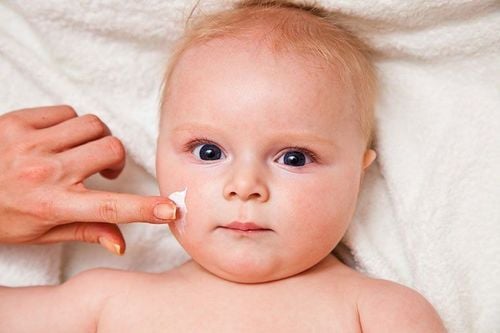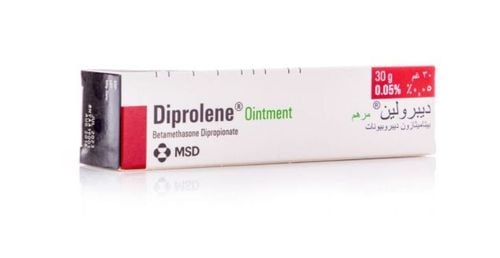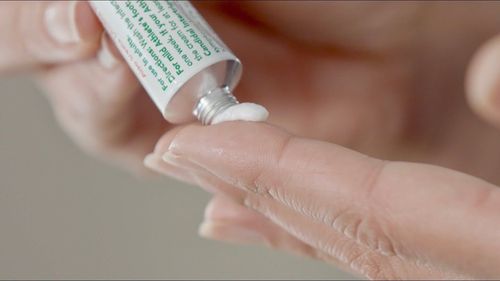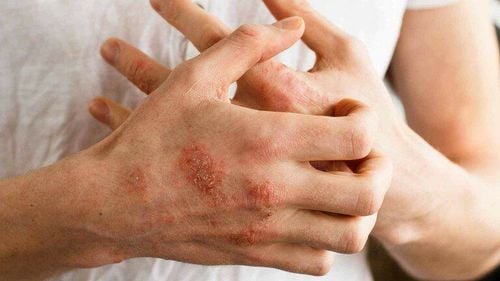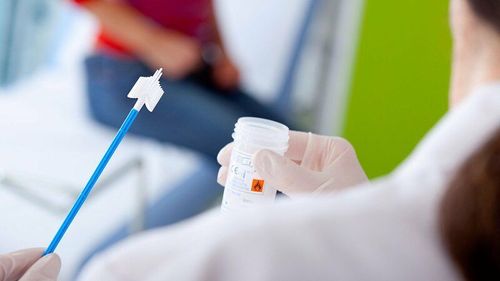This is an automatically translated article.
Herpes Simplex Viral Dermatitis 1 (HSV1) is an inflammatory skin condition caused by a virus. The disease is also common in patients with atopic dermatitis or contact allergies.
1. What is Herpes Simplex 1 viral skin disease?
Viral dermatitis is a skin condition caused by the Herpes Simplex virus 1 (HSV1). The disease is also common in patients with atopic dermatitis or contact allergy, or possibly atopic dermatitis.Viral dermatitis is a disease that can be transmitted through direct contact with secretions and fluids of an infected person. The disease usually appears in open skin areas such as head, face, neck, severe cases can spread to the whole body.
2. Symptoms of dermatitis caused by HSV1 virus
After HSV1 virus enters the body, they will cause illness and incubate for 1-2 weeks. Accordingly, skin inflammation appears with the following clinical symptoms:
Tiny red, small-sized blisters scattered on the skin.
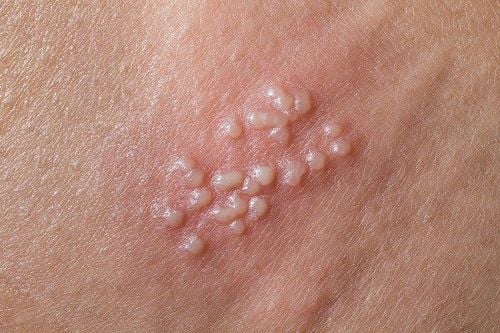
Virus HSV1 xâm nhập làm xuất hiện những mụn nước nhỏ li ti trên da
The inside of the blister contains fluid. Blisters cause itching. When scratching, the scratch can break and release fluid, which dries up to form a hard scab on the skin. Damaged, inflamed skin can cause a burning sensation. The HSV1 virus usually causes inflammation in the superficial layers of the skin, either acutely or chronically. The disease is long-lasting, or relapsing, and often progresses in waves, resulting in a feeling of dry, tight skin.
3. Diagnosis of dermatitis caused by HSV1 . virus
Diagnosis of HSV1 viral dermatitis is usually based on clinical symptoms. However, in some cases, the doctor may order a cytology test at the damaged skin. The test results show the image of multinucleated cells. In addition, performing PCR test also showed positive results for HSV1 virus.
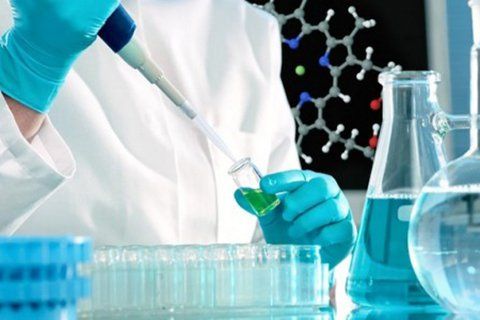
Xét nghiệm tế bào học để chẩn đoán viêm da do virus HSV1
4. Treatment of skin diseases caused by Herpes Simplex virus 1
The treatment of skin disease caused by Herpes Simplex virus 1 will face many difficulties because this is a disease that cannot be completely cured. The main goal of treatment is to control symptoms such as itching, dermatitis, and at the same time to prevent superinfection on the skin.
General treatment of viral dermatitis includes the following measures:
Limit exposure to irritants. Limit or avoid exposure to the triggering allergen. Use antihistamines, corticosteroids to reduce itching, inflammation, allergies. Limit or avoid scratching, scratching, contacting chemicals in inflamed, damaged skin. In case the patient has a superinfection, oral antibiotics may be prescribed. In addition, depending on the condition and extent of the skin damage caused by HSV1 virus, the doctor will prescribe topical medications and appropriate care such as:
Lesions containing watery fluid, ulcers on the skin: topical treatment with antiseptic, skin soothing, anti-itching. Take care to avoid getting wet fluid on the skin to cause inflammation by applying gauze containing the solution, then applying the medicine in combination with the lake. Dry, scaly lesions: Apply creams containing zinc oil, topical corticosteroids and antibiotics.
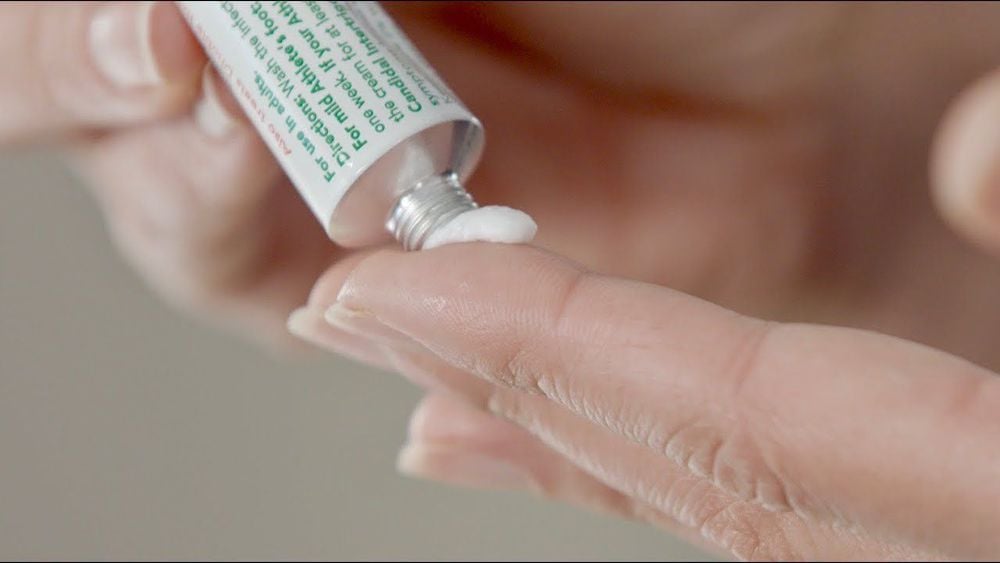
Bệnh nhân thường tự điều trị bệnh bằng thuốc bôi theo đơn của bác sĩ
5. Prevention of dermatitis caused by HSV1 . virus
To prevent dermatitis caused by HSV1 virus, patients should note:
Do not share personal hygiene items. Do not use makeup cosmetics of unknown origin. When there are any abnormal symptoms on the skin, it is necessary to consult a dermatologist soon. Herpes Simplex Viral Dermatitis 1 (HSV1) is a common inflammatory skin condition in patients with atopic dermatitis, atopic dermatitis, or allergic contact dermatitis. If there are abnormal symptoms on the skin, the patient needs to go to the doctor immediately to be treated and prevent superinfection caused by the virus.
At Vinmec International General Hospital, there is a package of examination and advice on treatment of atopic dermatitis to help customers assess the overall condition of the disease and advise on measures to help prevent recurrence.
When registering for a package of examination and consultation for treatment of atopic dermatitis, customers will receive: Dermatology specialist examination. Perform tests such as: quantitative IgE, fresh mycobacteria, specific IgE quantification with respiratory allergens - food (Panel 1 Viet), test Rida Allergy Screen (panel 1)...
To be examined and treated with leading Dermatologists at Vinmec, you can contact HERE




